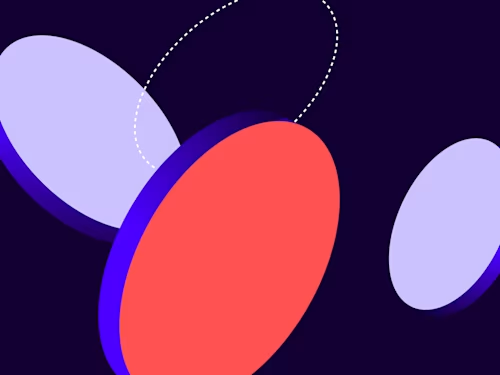
Connect 2.0
Broaden your workflows from limited envelope statuses to a wide range of specific events.

Broaden your workflows from limited envelope statuses to a wide range of specific events.
Over the past decade, Docusign Connect has helped customers automate their workflows by using webhooks to build envelope status–based applications specific to their organization’s needs. With more and more businesses building on the Docusign Agreement Cloud and automating their business processes, companies need to configure additional trigger points so they can have a more robust integration between Docusign and their external systems.
Most regulated industries often have a need to enforce compliance standards of their Docusign processes. These customers need to audit what changed within their Docusign account, such as if an envelope is being corrected by the sender.
These requirements need an evolved set of tools to provide real-time updates of events and notifications without consuming large amounts of system resources, ultimately allowing customers to exponentially scale requests. From using webhooks instead of network calls to the API platform, Connect has enabled customers to automatically push envelope documents, Certificates of Completion, metadata, and document data to store in backend systems such as Salesforce, homegrown tools, and others.
Customers can create multiple Connect configurations, each with different events or users, and set up listeners to monitor those configurations providing insight into their workflow. However, until now this has been limited to include only envelope statuses.
What is Docusign Connect 2.0?
We’re excited to announce Connect 2.0, a new webhook structure that opens the door to all sorts of new use cases built off of events like Docusign Click, Delegated Signing, templates, resends, purges, corrections, and much more. Unlike messages in the previous supported formats, the new message structure is event-focused rather than envelope-focused.
Our goal is to create one new consistent structure for our customers to meet these needs. Rather than getting a summary of the envelope in each message, by default, the message contains data about the triggering event. With each message being focused on the data requested, each payload can be much smaller, customizable and easier to process.
Note: This feature will be available in production on March 7th, but you can test it in our demo environment using your Developer Account today.
What is the new message structure?
The message structure for all events will contain:
An
eventelement, which identifies the event that generated the message.An additional set of standard elements generated for each event:
event,uri,retryCount,configurationId,apiVersion,generatedDateTime, anddata. These elements will be included in all messages.A
dataelement, which contains all of the data unique to the event that generated the message. The contents of thedataelement will differ depending on the event generated and the set of data that you choose to subscribe to through Docusign Connect.
Within the data element is the envelopeSummary, which is the previously supported format if included.
{
"event": "envelope-sent",
"uri": "/restapi/v2.1/accounts/{{accountId}}/envelopes/{{envelopeId}}",
"retryCount": 0,
"configurationId": 1025xxxx,
"apiVersion": "v2.1",
"generatedDateTime": "2022-01-31T03:58:37.7647887Z",
"data": {
"accountId": "37b137e7-d31b-xxxx-xxxx-xxxxxxxxxxxx”,
"userId": "942137e7-d31b-xxxx-xxxx-xxxxxxxxxxxx",
"envelopeId": "645b137e7-d31b-xxxx-xxxx-xxxxxxxxxxxx",
"envelopeSummary": ""
}
}
What are the new supported events?
All of the newly-added events for the upgraded webhook structure are listed below. For a comprehensive list of all events, see Docusign Connect on the Developer Center.
Event
Triggered when:
envelope-resent
The envelope is resent within the web application or via the Envelopes API call.
envelope-corrected
The envelope is corrected within the web application or via any of the Envelopes/EnvelopeRecipients API calls.
Note: For this event to be generated in the API, a lock will need to be created before the envelope updates and the lock will need to be deleted.
envelope-purge
The envelope is queued to be purged within the web application or via the Update Envelopes API call.
Note: The Purge queue has four states that will populate within the purgeState parameter within the envelopeSummary.
documents_queueddocuments_and_metadata_queueddocuments_and_metadata_and_redact_queueddocuments_dequeued
envelope-deleted
The envelope leaves a created or draft state and is sent out and deleted within the web application.
Note: This event will not trigger for created or draft envelopes.
envelope-discard
The envelope is in a created or draft state and deleted within the web application or discarded within the tagging UI.
recipient-resent
A recipient is resent an envelope within the web application or via the EnvelopesRecipients API call.
recipient-delegate
After a Delegation rule is in place and when a delegated signer is sent an envelope within the web application.
recipient-reassign
The envelope is reassigned by a recipient within the web application.
recipient-finish-later
The recipient selects Finish Later within the web application on an envelope.
template-created
A template is created within the web application or via the Templates: create API call.
template-modified
A template is modified within the web application or via the Templates: update API call.
template-deleted
A template is deleted within the web application or via the recycle bin API call.
click-agreed
A recipient accepts a Clickwrap.
click-declined
A recipient declines a Clickwrap.
Summary
Connect 2.0 is available for account-level and envelope-specific webhooks. The new feature makes it so your Agreement Cloud processes can have a more fine-grained integration between Docusign and your external systems. Please refer to our developer documentation to learn more about the new webhook model and what the structure looks like for each event. Please refer to our admin guide to learn more about setting up the configurations in the web application.
Questions or comments? Let us know in the Docusign Community.
Ready to start building? If you’re already a Docusign user, check out the Connect 2.0 tools in your Developer Demo account now or sign up for a free developer account. Not yet using Docusign? Get started today.
Additional resources

Alan Roza is a Product Manager working on the API Team. His main focus is working with developers and their integrations. He is based in Seattle, Washington.
Related posts
Docusign IAM is the agreement platform your business needs





